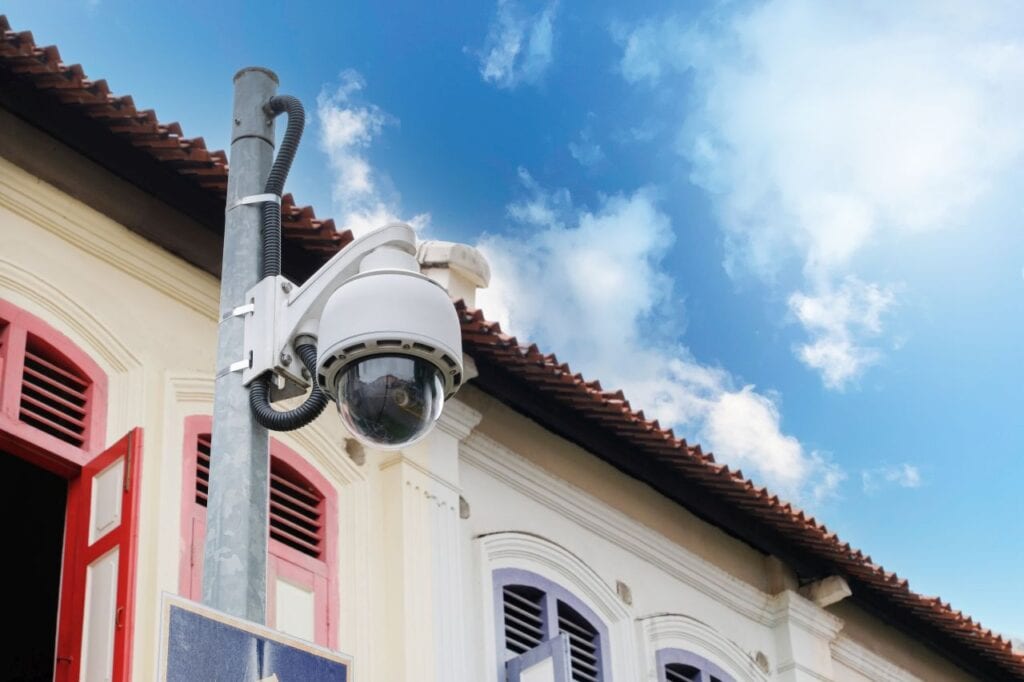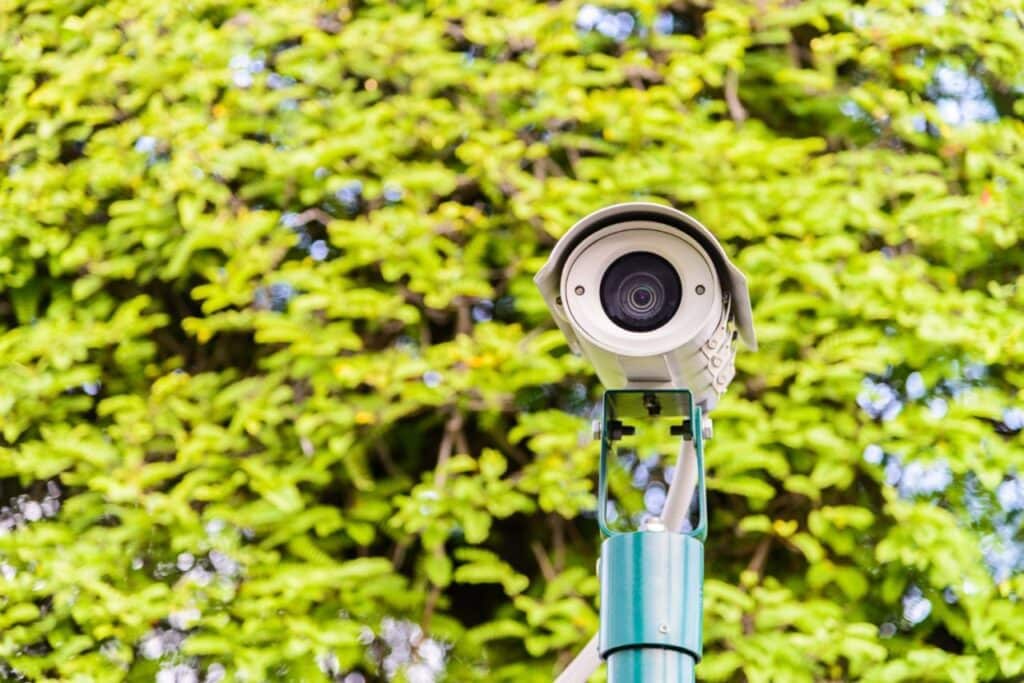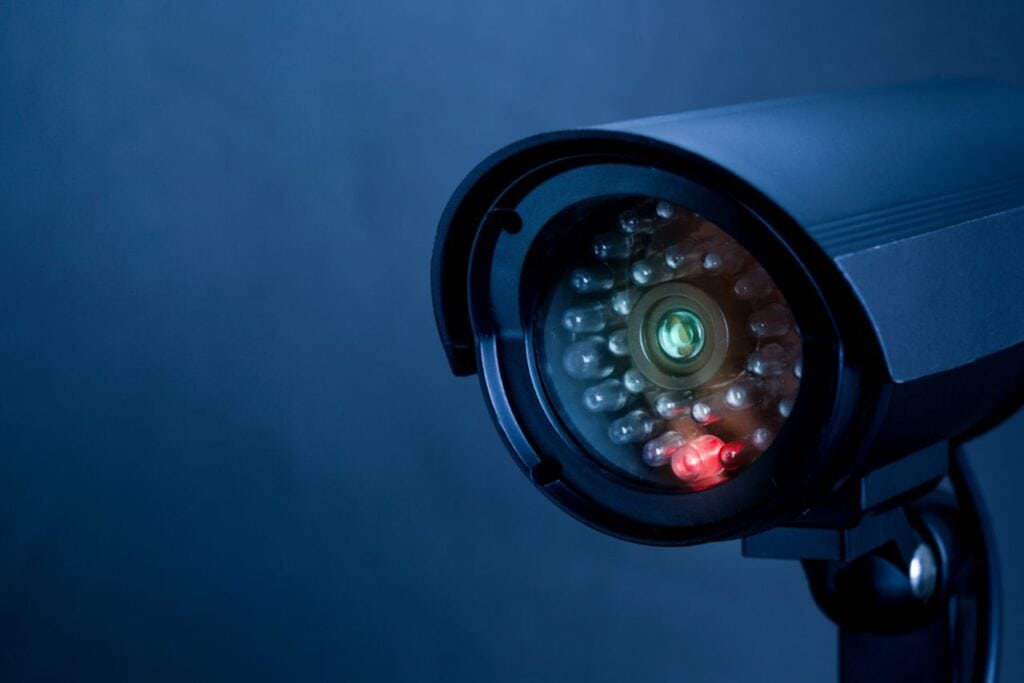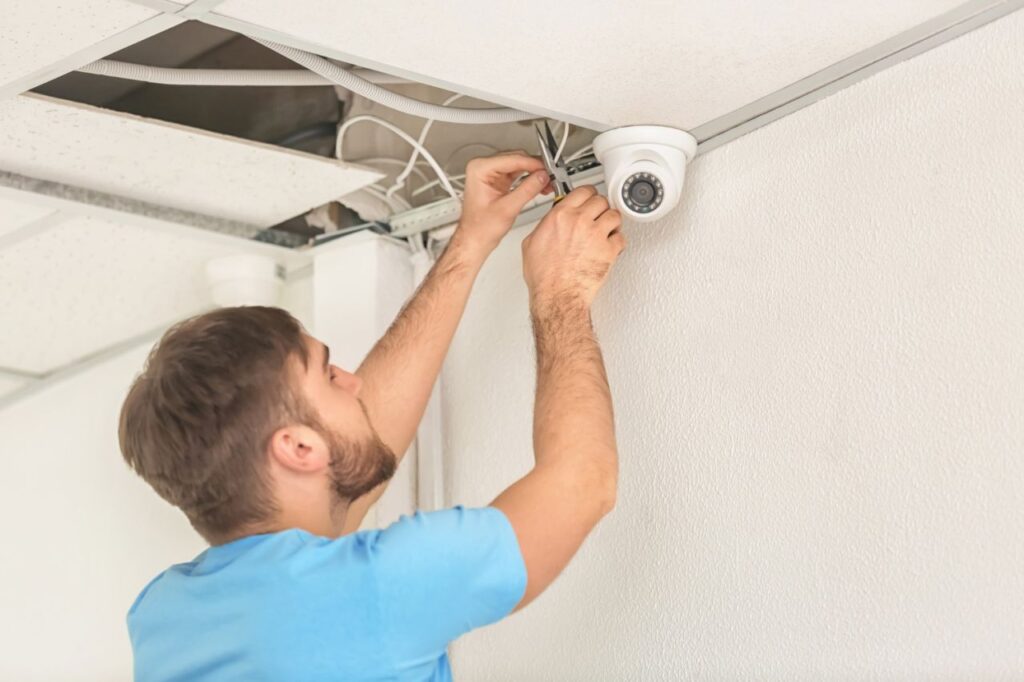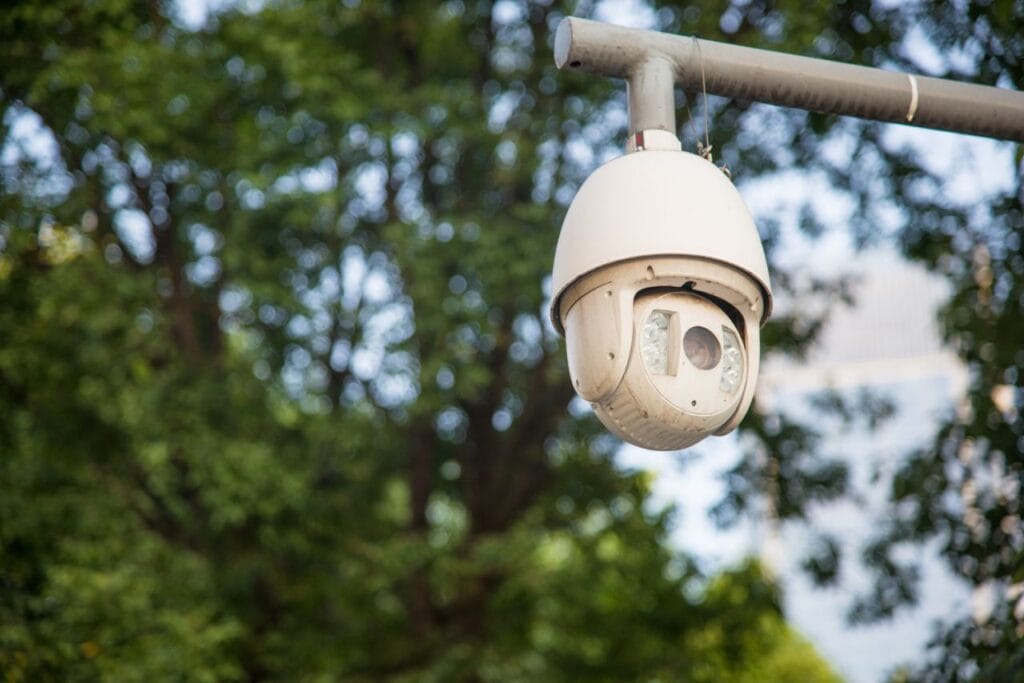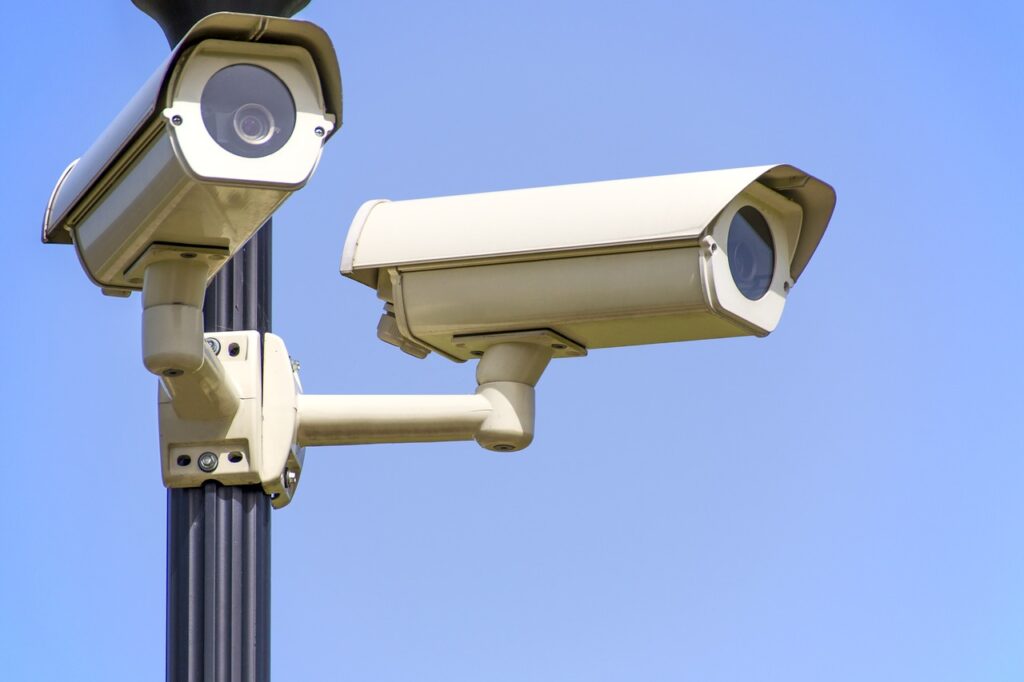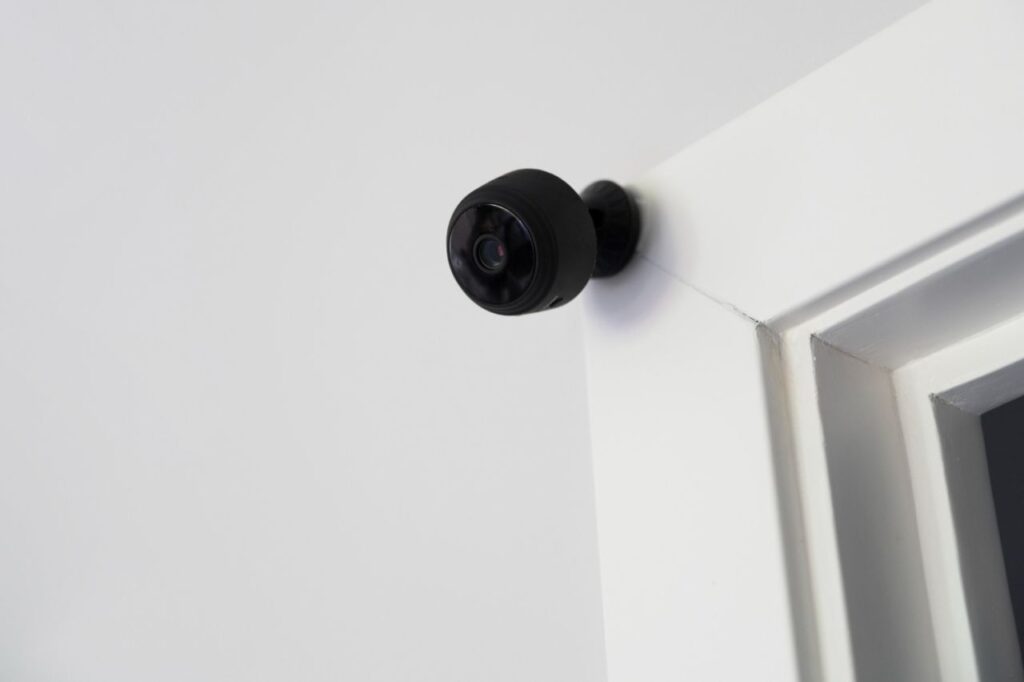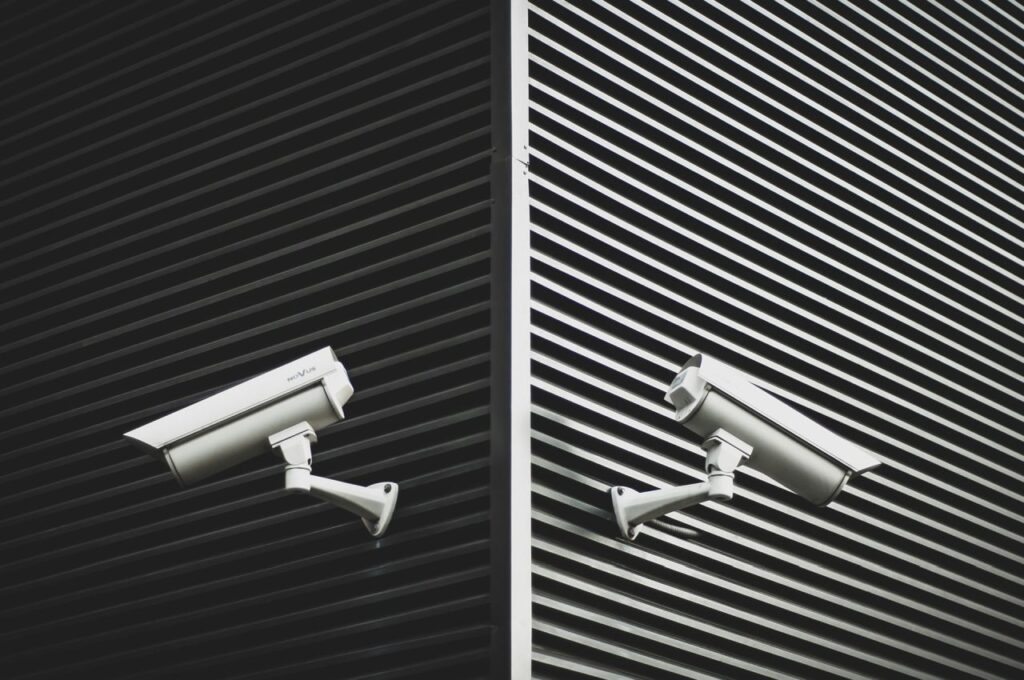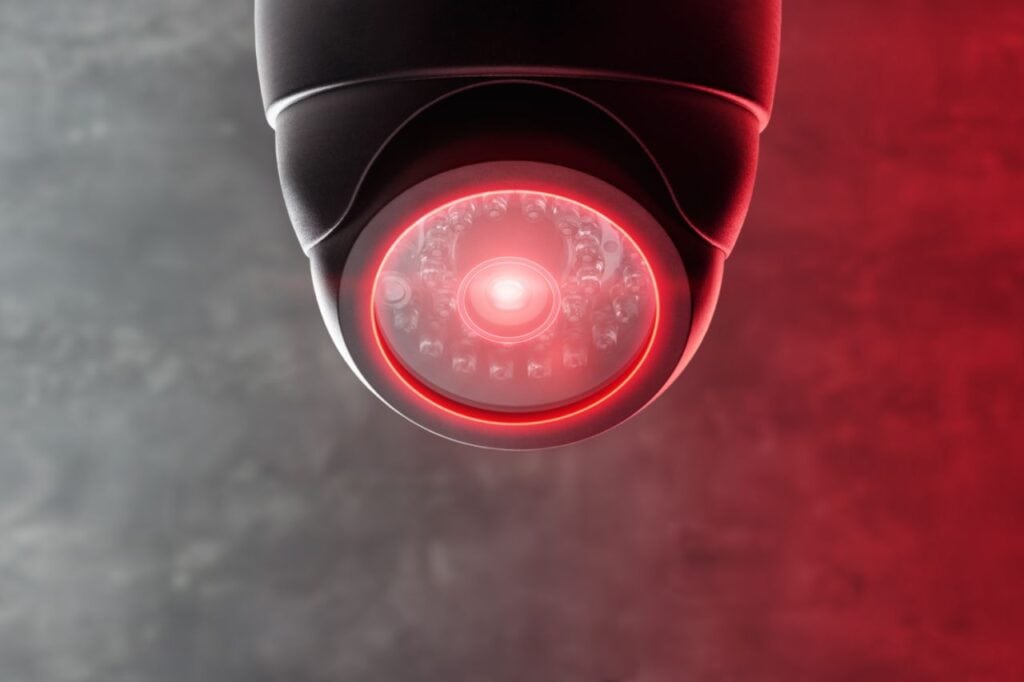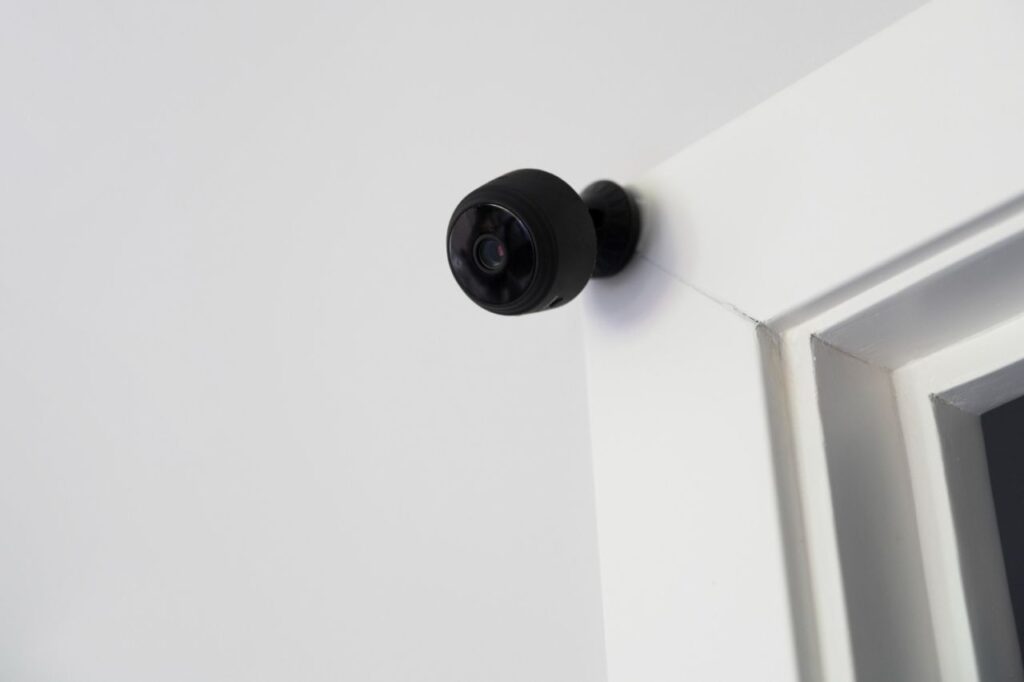Avoiding a break-in is preferable to cleaning up after one. In addition, a well-implemented CCTV system can serve as a powerful disincentive to would-be burglars who might otherwise attack your house or business. The phrase "closed-circuit television" (CCTV) refers to a group of video surveillance technologies that capture or display footage from multiple cameras in a loop (sometimes called a circuit) on a single television screen.
After deciding to establish a security system, one of the next stages is deciding which cameras will be used. The two most common camera designs are the bullet and the dome. There are some subtle variations between the two types of security cameras that you should know regardless of the size or kind of your property.
To assist you in making a well-informed decision, our security specialists have compiled this guide to compare and contrast dome and bullet cameras. When comparing bullet cameras to dome cameras, it's important to note the variations in dimensions, mounting, and field of view. Dome cameras are more covert than bullet cameras because of their protective dome casing and larger field of view.
What is a Dome Camera?
The circular, dome form factor is what gives dome security cameras their name. A see-through dome shields the camera from damage. Dome security cameras have a small profile and are, therefore, ideal for indoor application in a variety of settings, including hotels, restaurants, and retailers.
Dome cameras have the advantage of hiding the camera's direction of view, which is one of their key selling points. As a result of the dome's protective design, dome cameras tend to last longer and be less susceptible to damage. There are also dome cameras available that are protected from vandalism thanks to their sturdy housings. Bullet cameras, on the other hand, are easily dislodged or redirected by hand. Unlike fixed-lens bullet cameras, Dome cameras may pan and tilt their lenses to capture a broader field of view.
Advantages of Dome Cameras:
- Reduces visibility; camouflages easily
- Vandal resistant
- Rotating camera & wide angle
- Weatherproof
- Indoor & outdoor use
- Night Vision
Types of Dome Cameras
Vandal-proof Dome Cameras
These cameras can handle being messed with, vandalised, and exposed to the elements. They're frequently put to use in dangerous spots where regular cameras would be at risk.
Indoor Dome Cameras
Indoor dome cameras are intended for usage within a building, as the name implies. They are commonly installed in businesses, workplaces, and other enclosed spaces to keep an eye on employees and deter theft.
Outdoor Dome Cameras
Outdoor dome cameras are built to survive the elements, including rain, snow, and freezing temperatures. They are frequently installed in parking lots, around building perimeters, and other outdoor areas for the purpose of surveillance and crime prevention.
What is a Bullet Camera?
The cylindrical design of a bullet camera evokes a bullet casing or a lipstick tube, hence the name. Bullet cameras, one of the most prevalent kinds of security cameras, can serve as a visible deterrent. The presence of surveillance cameras has been shown to deter would-be burglars. Bullet cameras, like dome cameras, are equally at home in either an interior or outdoor setting.
Bullet cameras' key advantages are their long-range and easy installation. Because of their greater range, bullet cameras are well-suited for monitoring expansive areas like backyards and parking lots. In addition to being more user-friendly, bullet cameras also have the advantage of being able to accommodate larger lenses. The bullet camera is designed for outdoor use and has a little lip at the tip to shield it from light and the elements.
Primary Benefits of Bullet Cameras:
- Longer range
- Indoor & outdoor use
- Easy of installation
- Weatherproof
- Night Vision
Types of Bullet Cameras
Fixed Bullet Cameras
Bullet cameras with fixed lenses can only record footage in one direction. Common applications include keeping an eye on the front door or a gate.
Varifocal Bullet Cameras
The field of vision of a varifocal bullet camera can be changed by adjusting the lens' focal length. Common applications include surveillance of big spaces like parking lots and warehouses.
Infrared (IR) Bullet Cameras
Infrared (IR) bullet cameras are capable of taking clear pictures even when there is little to no ambient light. They are frequently installed in parking lots and along the outskirts of buildings to supplement the lighting in those areas.
Motorized Bullet Cameras
The field of vision of motorised bullet cameras can be changed by remotely adjusting the camera's motorised lens. They find widespread application in settings where wide-ranging camera coverage is required and where rapid changes to the camera's field of view are required.
Smart Bullet Cameras
The sophisticated analytics software in smart bullet cameras allows them to identify and analyse a wide variety of events and objects. Counting the number of people in a room or reading licence plates are just two examples of the many uses for these devices.
The Primary Distinctions Between Dome and Bullet Cameras
Installation
Dome cameras can be hung from the ceiling or mounted on the wall, making them suitable for both indoor and outdoor use. Dome security cameras are more difficult to install than bullet cameras, but only slightly so because they are less noticeable. Changing the field of view requires remounting a dome camera, while a bullet camera can usually be moved to a new location (so long as the target area is still within the camera's viewing range).
Bullet cameras can be put on the side of the wall and are used both indoors and out. Bullet cameras have a mounting handle that makes installation much simpler. After setup, the camera's lens can be pointed in the direction you want it to keep an eye on.
Camera Range
The dynamic range, lines of resolution, backlight adjustment, and kind of sensor chip all play a role in how far a camera can focus. Dome cameras often use narrower lenses than bullet cameras because of the dome's constraints, though this does vary depending on the model. Therefore, bullet cameras are better suited to situations that call for a greater viewing distance.
Light
While lighting is always an issue, infrared LEDs are becoming increasingly common in bullet and dome cameras, making it so that lighting conditions are less of a concern. The infrared LEDs allow the cameras to function even when the light is dim.
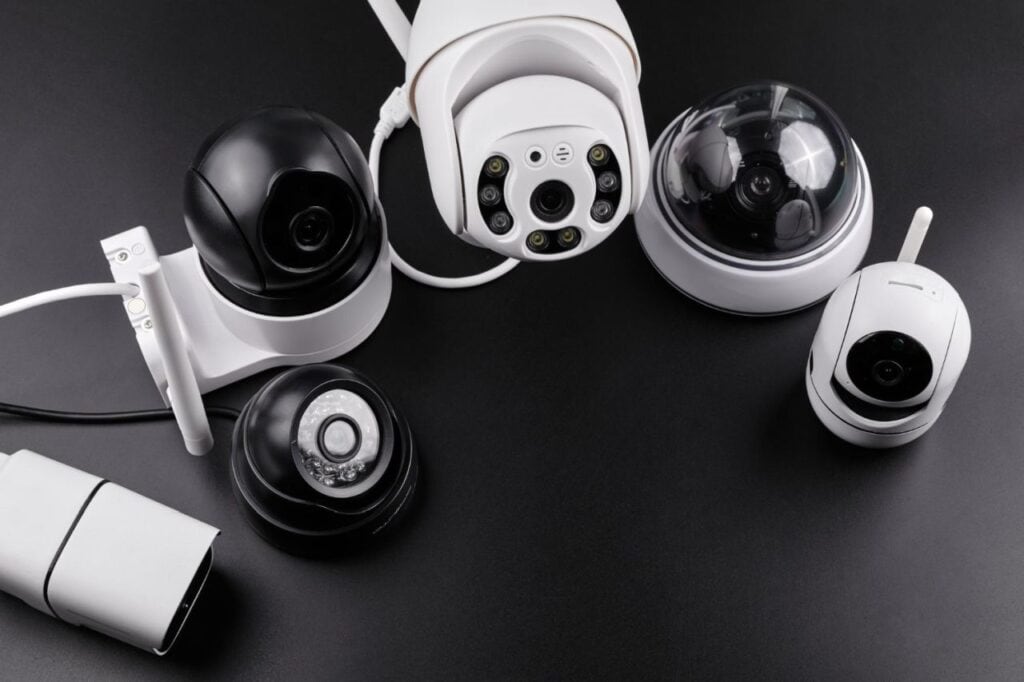
Uses for Dome vs. Bullet Security Cameras
When deciding between bullet and dome cameras, examining the situations in which each kind excels can be instructive.
Perimeter Protection
In most cases, bullet-style cameras are the best option for keeping an eye on the perimeter of a large structure, a parking lot, or the garden of a private residence.
Both dome and bullet cameras may be installed outdoors and work in low-light settings, but a bullet camera's superior range makes it the better choice for low-light surveillance. Both varieties of cameras can be equipped with the extreme temperature security necessary for use outdoors, should your company require such a device.
Building Access
Dome cameras are typically the best choice when it comes to keeping an eye on the entrances and exits of a facility. Dome security cameras have a wider field of vision and are thus better suited to monitoring large areas.
Commercial Property Interiors
In general, dome and bullet cameras are equally well-suited to the interiors of commercial buildings, while there may be circumstances in which one system would be preferable.
A dome camera, for instance, offers a wide field of vision and can follow a moving object, making it ideal for monitoring busy retail store aisles.
A bullet camera may be a better choice when watching areas where the target is more likely to remain still, like loading docks, private pathways, or displays holding high-priced commodities.
Commercial Property Exteriors
The visible deterrent feature of a bullet camera, as opposed to a dome camera, may be especially useful for business owners who are establishing a business security system to defend the exterior of their property.
One notable distinction between dome and bullet cameras is that the latter are more commonly used for outdoor applications, including parking lots, gates, and front doors. With a more focused field of view, it will be easier to identify cars and people entering and leaving the property.
Factors to Consider When Choosing Dome or Bullet CCTV Cameras
Environment and Location
The surroundings and setting of the camera's installation are crucial considerations. For outdoor use, you'll need a camera with a sturdy casing that can withstand the elements. Vandal-proof dome cameras are the best option if you plan to install the camera in a high-risk area.
Purpose of Surveillance
The reason for the surveillance is also an essential consideration. Both dome and bullet cameras are suitable for general surveillance applications. However, a smart bullet camera may be preferable if the camera is utilised for certain functions, such as licence plate recognition or facial recognition.
Aesthetics and Design
When placing a camera in a public space, its form and finish might be taken into account. Dome cameras are prefered over bullet cameras because they are less noticeable and more aesthetically pleasing.
Cost and Budget
Budget and cost are other crucial aspects to think about. Dome cameras are more expensive than bullet cameras but are more secure and less susceptible to vandalism and extreme weather. However, bullet cameras are typically less expensive and simpler to set up.
Dome Camera vs. Bullet Camera: The Final Verdict
Although bullet cameras may see further, dome cameras have a more 360° field of view. Bullet cameras' biggest drawback is their susceptibility to vandalism. Bullet cameras, in contrast to dome cameras, which have a protective cover for the camera within, can be redirected to record a different location than where a crime may be in progress. The primary consideration is whether or not the user actually requires a security camera. Both cameras will function admirably anywhere, but the bullet camera is better suited for long-range video while the dome camera excels at shorter distances but a wider field of view.
Both dome and bullet cameras have infrared LEDs to improve nighttime visibility. The same may be said for the climate. Both cameras are weatherproof and can operate in extremely low temperatures without malfunctioning, making them ideal for both indoor and outdoor use. Both models are built to withstand years of use; however, bird nests and spider webs pose a particular problem for bullet cameras.
However, because of the glass housing, dome cameras also require regular maintenance checks to remove dust and fingerprints. Unlike dome cameras, which need to be mounted on a ceiling, bullet cameras can be attached to any wall, making them ideal for use in outdoor settings. There may be room to install an outdoor dome camera, but it will likely be useless because it will see nothing but a wall.
Conclusion
The key distinctions between bullet and dome CCTV cameras are discussed at length. Dome cameras, with their shielding dome housing and a wider field of view, are more discreet than bullet cameras. Dome cameras have a low profile and can be used anywhere inside, while bullet cameras can be easily moved by hand and are not as well suited to interior use. To get a broader perspective, dome cameras may pan and tilt their lenses. Dome cameras are a type of covert surveillance camera that may readily blend into its surroundings.
Dome cameras that can withstand vandalism and harsh weather conditions are called vandal-proof. Dome cameras can be divided into two categories: those designed for use indoors (or "indoor") and those designed for use outside (or "outdoor"). Outdoor-ready bullet cameras block out light and moisture with a protective lip at the camera's tip.
Longer range, simple installation, weatherproofing, night vision, a variable lens, infrared (IR), motorised lens, and smart lens are just a few of the many benefits of bullet cameras. There are many different types of bullet cameras, including those with fixed lenses that can only record in one direction, zoomable lenses that can capture clear images in low light, motorised lenses that can be adjusted from a distance, and intelligent cameras that can recognise and analyse scenes and objects.
Bullet cameras can be used indoors and outdoors, typically with a mounting handle. The dynamic range, lines of resolution, backlight control, and sensor chip are just a few of its many features. Dome cameras are better suited to long-range monitoring due to their narrower lenses and infrared LEDs. Dome cameras are ideal for monitoring large outside areas, restricted areas, and the insides of buildings and businesses. Dome cameras are superior for monitoring busy retail store aisles due to their greater field of view and the ability to track a moving object.
The cost of dome cameras is higher, but they are more resistant to vandalism and other forms of damage. Dome cameras provide a broader field of view but are more difficult to install than bullet cameras. Both cameras are infrared LED-equipped and waterproof; however, dome cameras need periodic cleaning to keep them functioning properly. Bullet cameras are convenient for use in the great outdoors because they can be mounted on any wall.
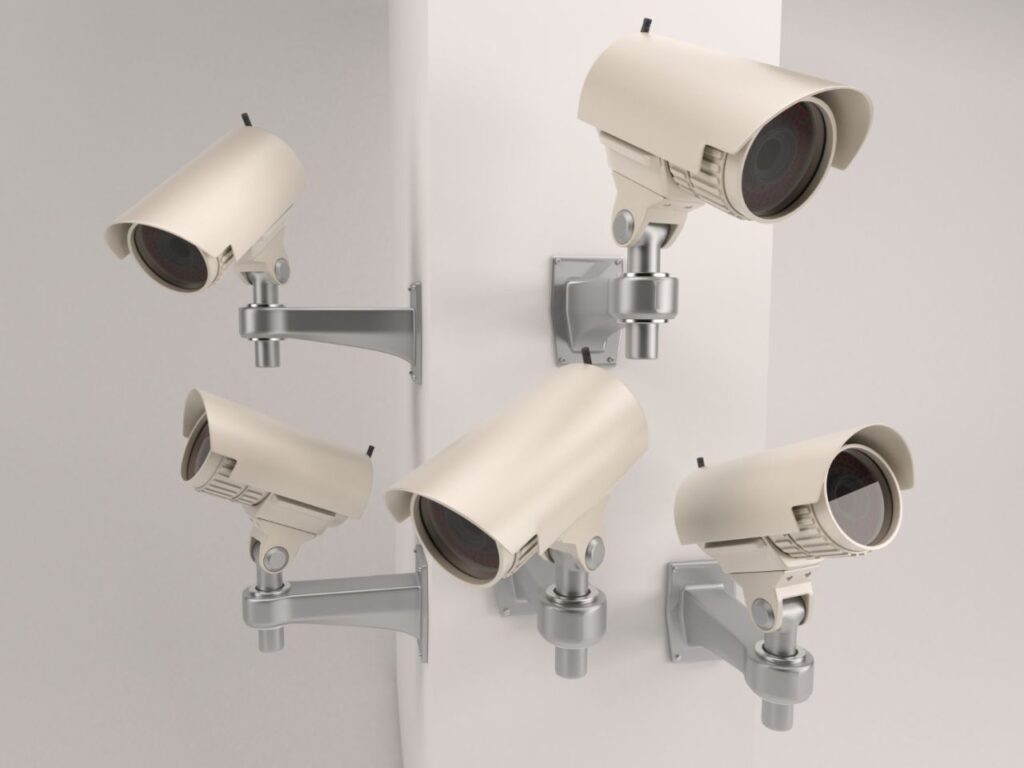
Content Summary
- After deciding to establish a security system, one of the next stages is deciding which cameras will be used.
- There are some subtle variations between the two types of security cameras that you should know regardless of the size or kind of your property.
- To assist you in making a well-informed decision, our security specialists have compiled this guide to compare and contrast dome and bullet cameras.
- When comparing bullet cameras to dome cameras, it's important to note the variations in dimensions, mounting, and field of view.
- The cylindrical design of a bullet camera evokes a bullet casing or a lipstick tube, hence the name.
- Bullet cameras, one of the most prevalent kinds of security cameras, can serve as a visible deterrent.
- Bullet cameras, like dome cameras, are equally at home in either an interior or outdoor setting.
- Bullet cameras' key advantages are its long range and easy installation.
- The field of vision of a varifocal bullet camera can be changed by adjusting the lens' focal length.
- The field of vision of motorised bullet cameras can be changed by remotely adjusting the camera's motorised lens.
- They find widespread application in settings where wide-ranging camera coverage is required and where rapid changes to the camera's field of view are required.
- The sophisticated analytics software in smart bullet cameras allows them to identify and analyse a wide variety of events and objects.
- Dome cameras can be hung from the ceiling or mounted on the wall, making them suitable for both indoor and outdoor use.
- Dome security cameras are more difficult to install than bullet cameras, but only slightly so because they are less noticeable.
- Changing the field of view requires remounting a dome camera, while a bullet camera can usually be moved to a new location (so long as the target area is still within the camera's viewing range).
- After setup, the camera's lens can be pointed in the direction you want it to keep an eye on.
- The infrared LEDs allow the cameras to function even when the light is dim.
- When deciding between bullet and dome cameras, examining the situations in which each kind excels can be instructive.
- Both dome and bullet cameras may be installed outdoors and work in low-light settings, but a bullet camera's superior range makes it the better choice for low-light surveillance.
- Dome security cameras have a wider field of vision and are thus better suited to monitoring large areas.
- In general, dome and bullet cameras are equally well-suited to the interiors of commercial buildings, while there may be circumstances in which one system would be preferable.
- The visible deterrent feature of a bullet camera, as opposed to a dome camera, may be especially useful for business owners who are establishing a business security system to defend the exterior of their property.
- With a more focused field of view, it will be easier to identify cars and people entering and leaving the property.
- The surroundings and setting of the camera's installation are crucial considerations.
- Vandal-proof dome cameras are the best option if you plan to install the camera in a high-risk area.
- The reason for the surveillance is also an essential consideration.
- Both dome and bullet cameras are suitable for general surveillance applications.
- When placing a camera in a public space, its form and finish might be taken into account.
- Budget and cost are other crucial aspects to think about.
- Dome cameras are more expensive than bullet cameras but are more secure and less susceptible to vandalism and extreme weather.
- However, bullet cameras are typically less expensive and simpler to set up.
- Although bullet cameras may see further, dome cameras have a more 360° field of view.
- The primary consideration is whether or not the user actually requires a security camera.
- Both cameras will function admirably anywhere, but the bullet camera is better suited for long-range video while the dome camera excels at shorter distances but a wider field of view.
- Both dome and bullet cameras have infrared LEDs to improve nighttime visibility.
- Both cameras are weatherproof and can operate in extremely low temperatures without malfunctioning, making them ideal for both indoor and outdoor use.
- Unlike dome cameras, which need to be mounted on a ceiling, bullet cameras can be attached to any wall, making them ideal for use in outdoor settings.
Frequently Asked Questions
While bullet CCTV cameras can be used inside, they primarily use exterior monitoring. However, a bullet camera with a wide-angle lens and high-resolution imaging can be an ideal choice if you need to keep tabs on a sizable indoor area.
Remote access and viewing is a feature of most bullet-style CCTV cameras. Anywhere you have an internet connection, you can check out the camera's live feed on your mobile device, tablet, or computer. The camera's focus, exposure, and other parameters can all be adjusted wirelessly.
A bullet CCTV camera's resolution, the field of view, night vision capabilities, weather durability, and compatibility with other security systems are all important considerations. The location, type, and cost of the cameras should all be considered. The ideal bullet CCTV camera for you will ultimately depend on your security requirements and the setting in which it will be positioned.
Bullet CCTV cameras have a number of advantages, including their long-range, good image quality, and durability to the elements. They can monitor expansive outside areas with little effort and are especially useful for monitoring parking lots, driveways, and boundary fences.



